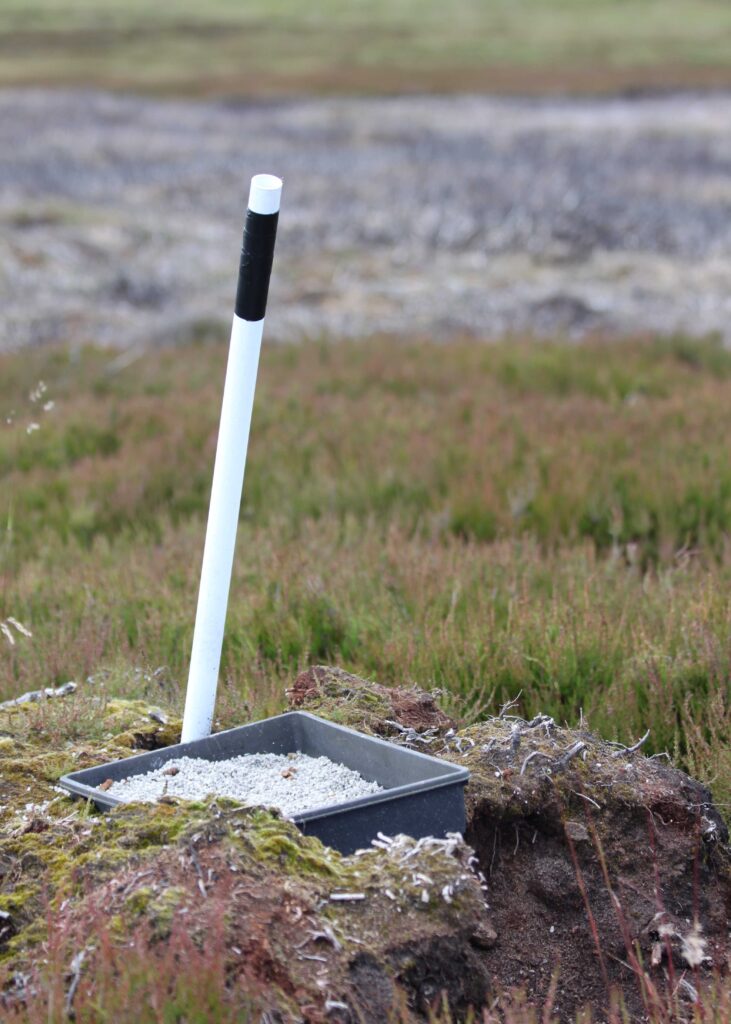Wild Justice partners with League Against Cruel Sports to fund development of new test to detect medicated grit
Wild Justice has partnered with the League Against Cruel Sports (Scotland) to fund the development of a new laboratory test which can detect the presence of medicated grit (Flubendazole) on grouse moors.
The new test has been used to analyse grit samples collected by the League from a number of moorland estates across Scotland and has revealed that some grouse-shooting estates are not adhering to the industry’s voluntary ‘best practice’ guidelines, raising questions about the prescription process, the administration of the drug, withdrawal and disposal issues and the potential impact of this drug on both environmental and human health.

We have published a joint briefing document (see below) and met with officials from the Scottish Government and its statutory nature conservation agency, NatureScot, last week to discuss our concerns.
Robbie Marsland, Director of League Against Cruel Sports Scotland, said: “Medicated grit is used by the shooting industry in a bid to treat parasites that reduce the numbers of Red Grouse to be shot for sport. Before we undertook this research, no one knew the extent, concentration or the prescription process behind this chemical which is known to be toxic to people and animals.
“It turns out that tonnes of medicated grit litter the Scottish landscape at levels of up to 2.5 times the recommended dose. We found the chemical at times when we would have expected it to have been withdrawn under statutory requirements and we found it both in trays with drainage holes or directly strewn on the ground.
“We have also uncovered the fact that this chemical isn’t even licensed for use on Red Grouse in the UK. It is prescribed using an emergency procedure that is supposed to be used on a case-by-case basis to ‘avoid unacceptable suffering’.
“With this new information, Ministers in Scotland need to urgently consider the potential dangers of medicated grit to the environment and to humans – especially to human health.
“An urgent and detailed review needs to be carried out into how such vast amounts of medicated grit are prescribed and used and, in the meantime, the Scottish Government should introduce a moratorium – a suspension – on the use of Flubendazole on grouse moors.”
Dr Ruth Tingay from Wild Justice said: “Wild Justice was pleased to co-fund the development of a test to detect the presence of the veterinary drug Flubendazole on grit placed out on grouse moors. The use of communal grit trays has already been linked to the rapid spread of a highly contagious disease in Red Grouse (Respiratory Cryptosporidiosis), which leads to serious welfare and conservation concerns, especially the threat of cross-contamination to other red-listed species in the area. To date, the statutory agencies are not adequately monitoring either the use of the drug nor the environmental consequences of its use. The report’s findings also lead to an important ethical question about this dubious widespread drugging regime of wild birds, simply to provide an opportunity for those birds to be shot later by a privileged few”.
Scottish Government officials told us that the issue over the prescribing of medicated grit is a reserved issue to the Westminster Government. However, they reassured us that the use of medicated grit will be included in the Grouse Moor Management Code of Practice currently being drawn up to accompany the Wildlife Management & Muirburn Bill (we had previously heard that some organisations from the grouse-shooting sector were trying to have it excluded from regulation). If grouse moor managers are found to be in breach of the Code of Practice this could be grounds for having their new grouse shooting licences revoked.
We have been invited to provide input to the draft Code of Practice on the use of medicated grit. Our recommendations will include the requirement for all medicated grit users to provide a copy of their veterinary prescription to NatureScot; that NatureScot can randomly sample grit from moors to test for the presence of Flubendazole or other anthelmintics (especially during the period when there is a statutory requirement for the drug to be withdrawn to prevent it entering the human food chain via shot Red Grouse) – this testing can now be facilitated by the newly developed laboratory test; that medicated grit should be administered in such a way that it is not allowed to leach in to the environment, and that medicated grit should be disposed of as a toxic substance.
An exclusive article about our joint project featured in The Herald yesterday, here.
Our briefing report can be read/downloaded here:
